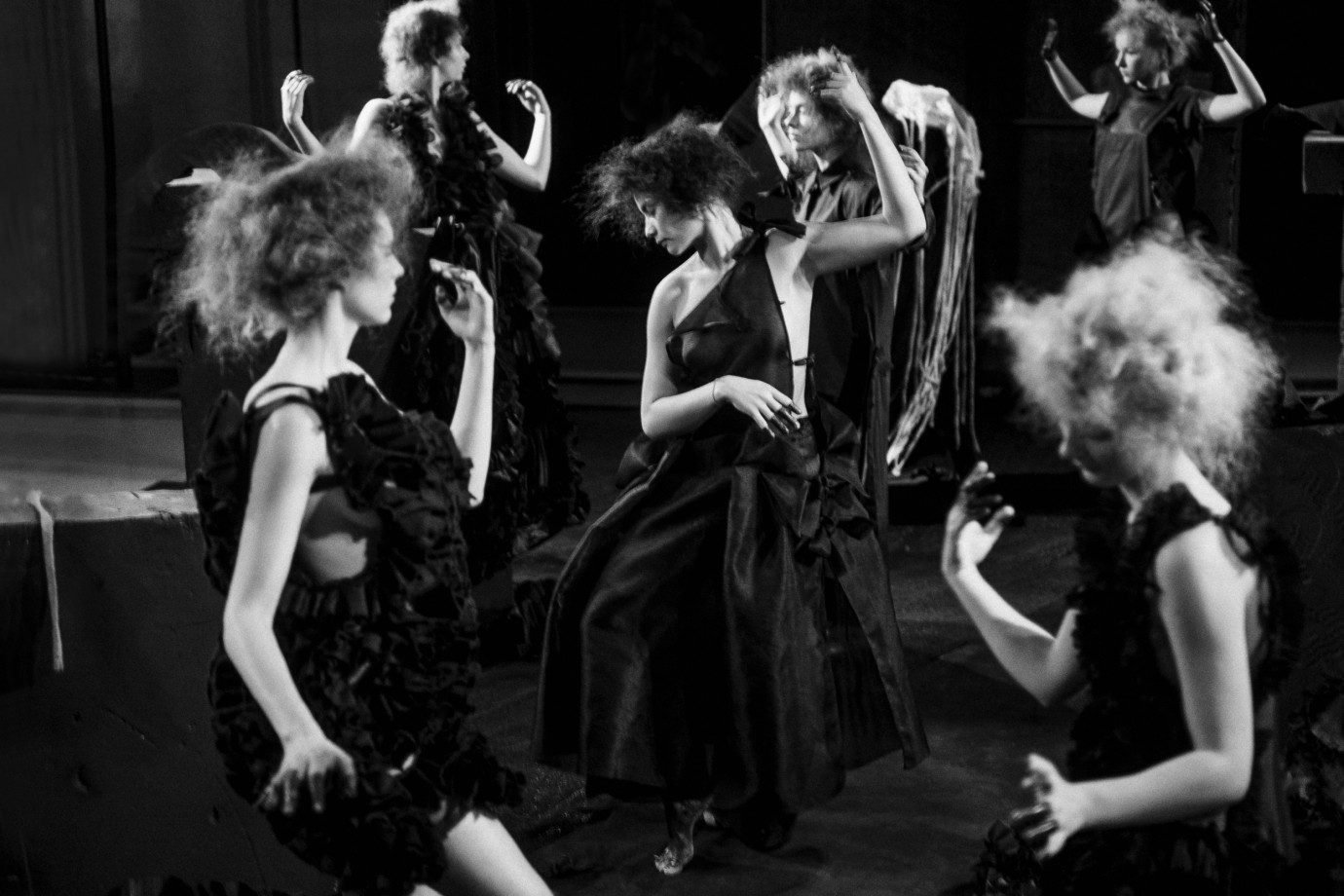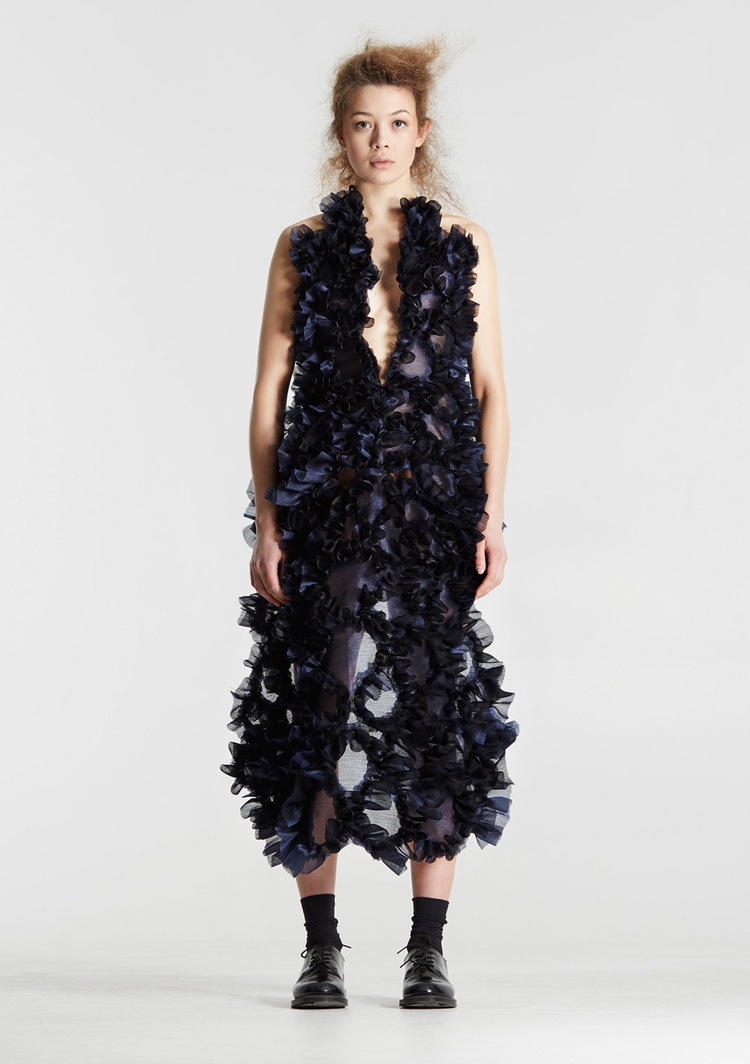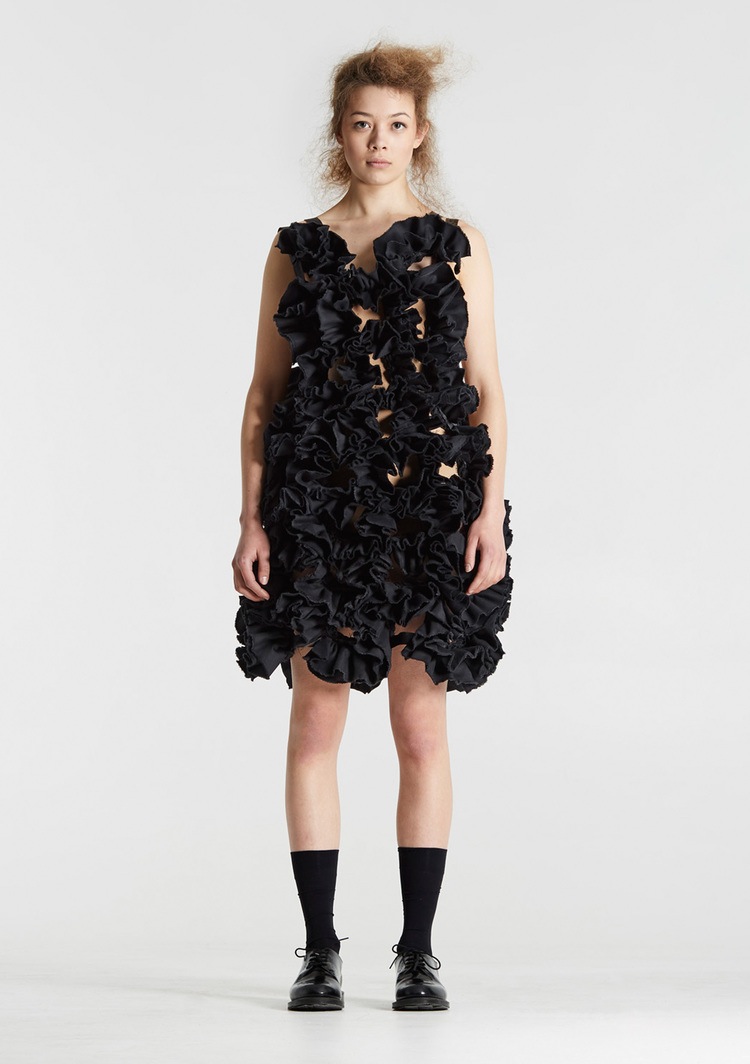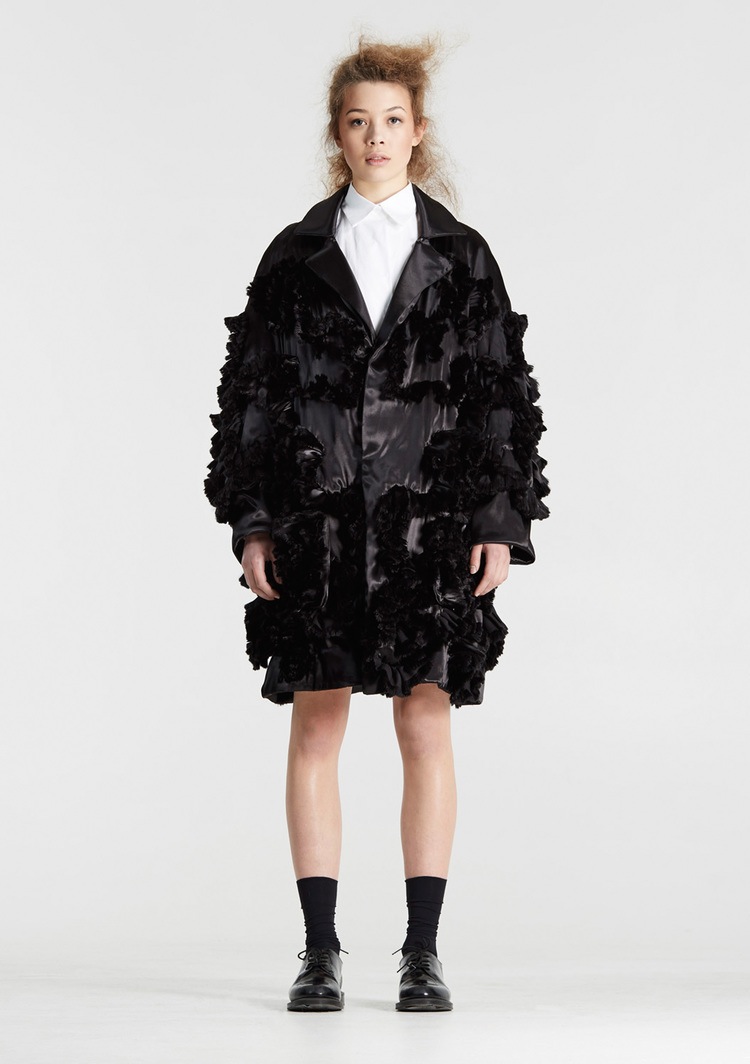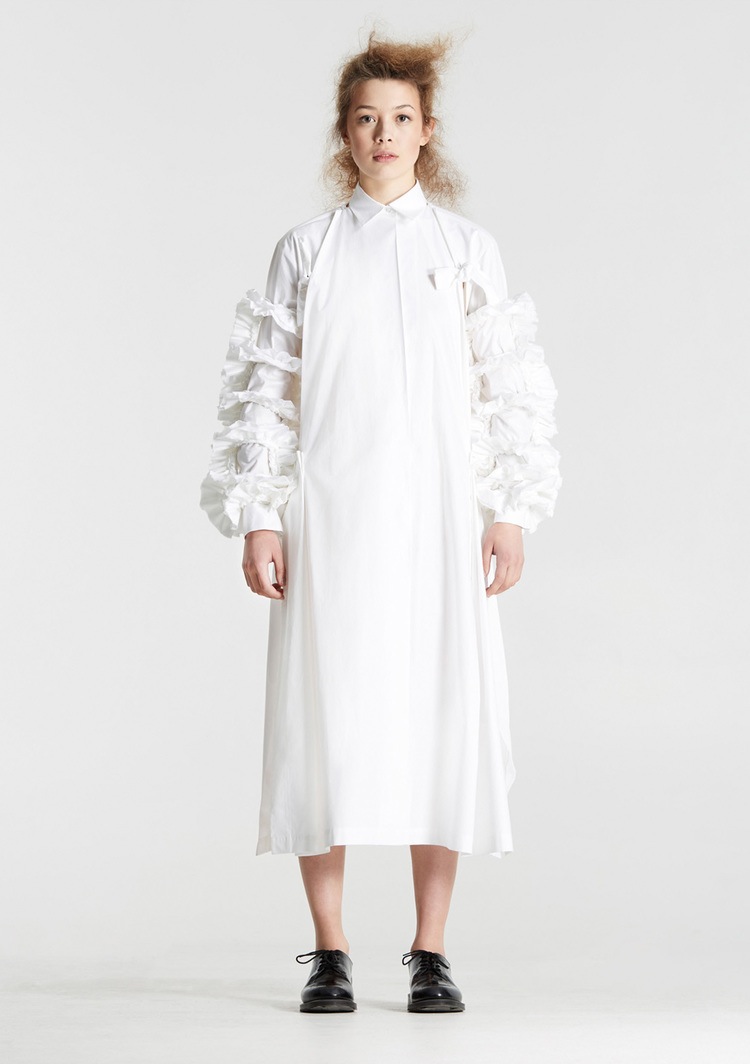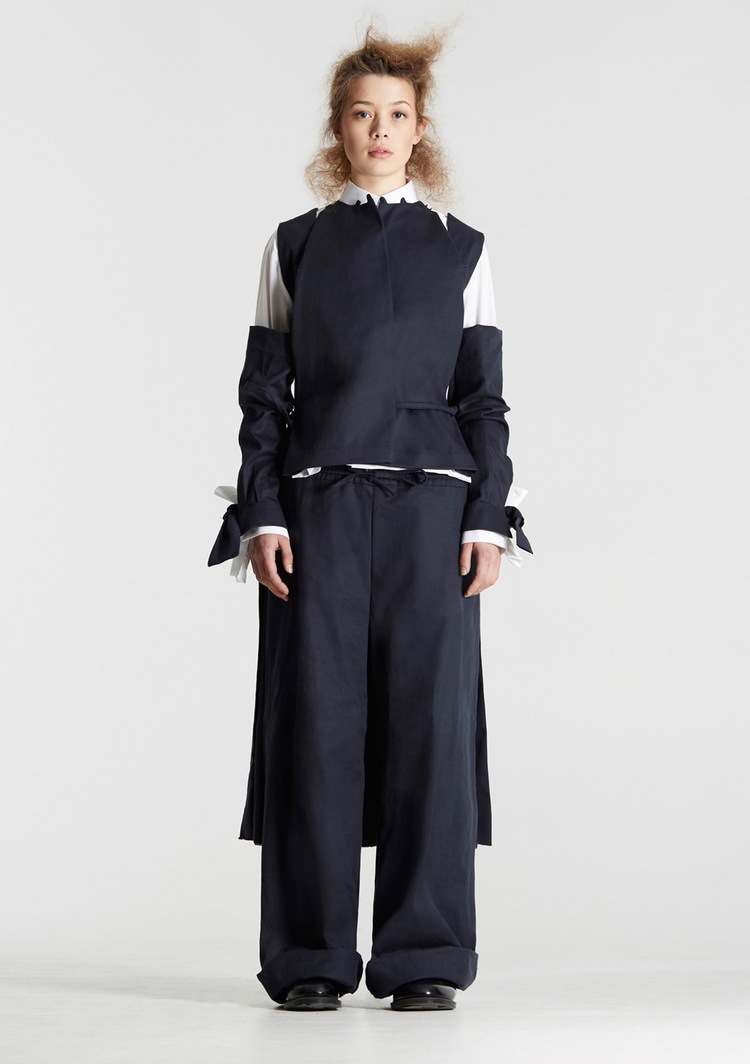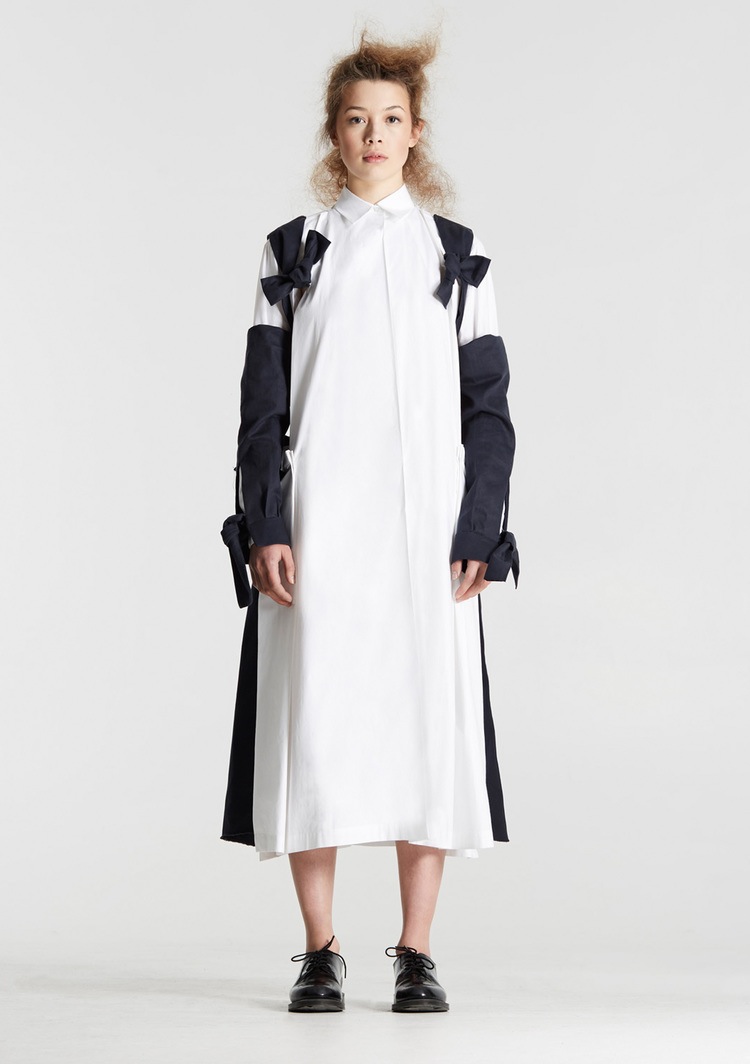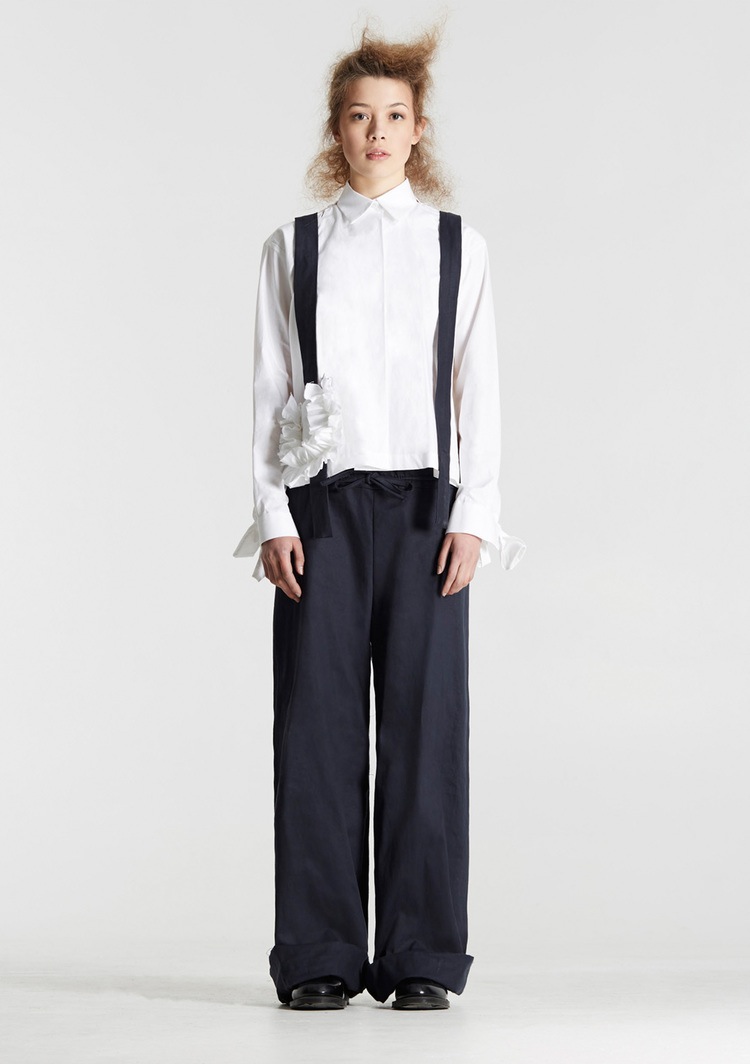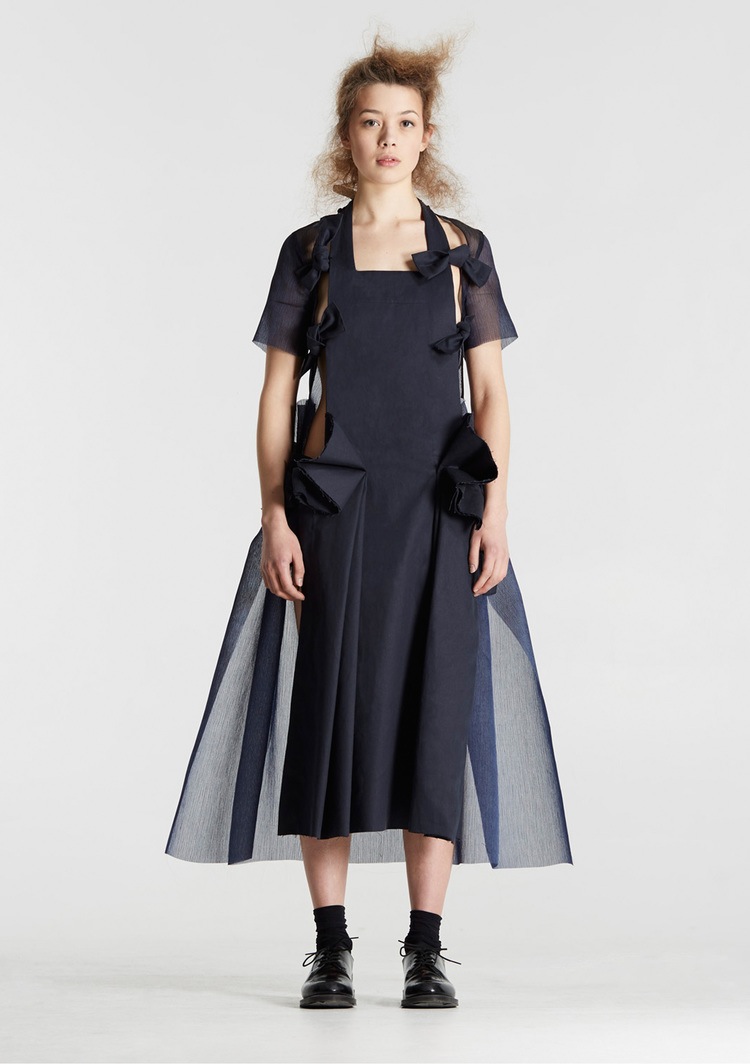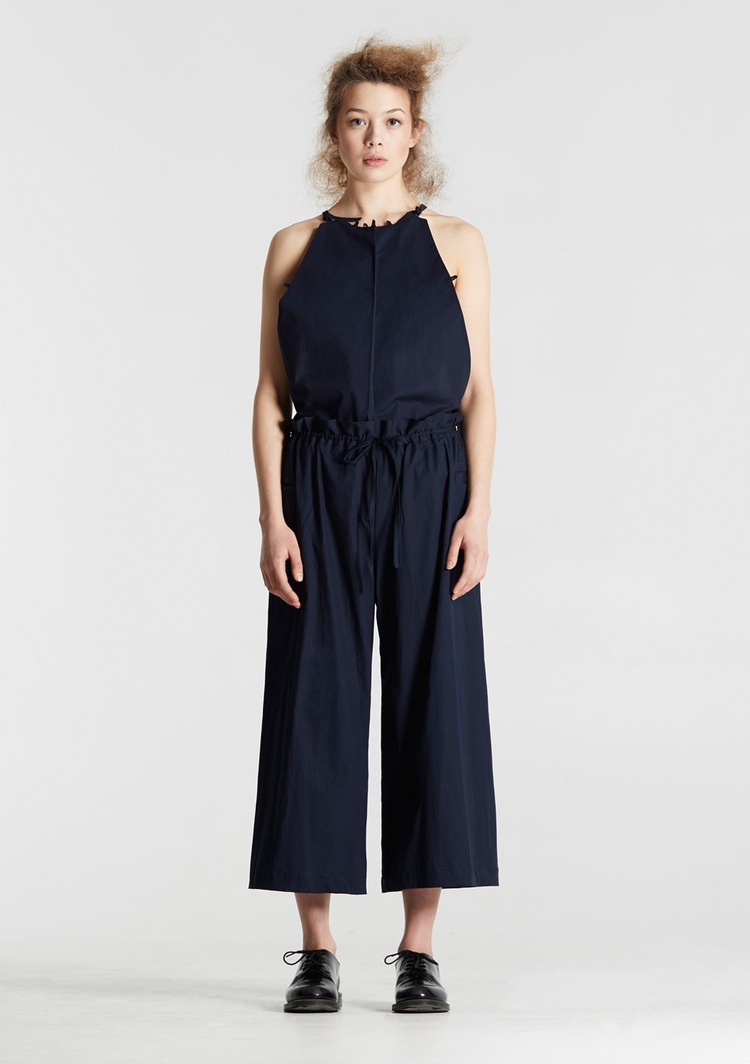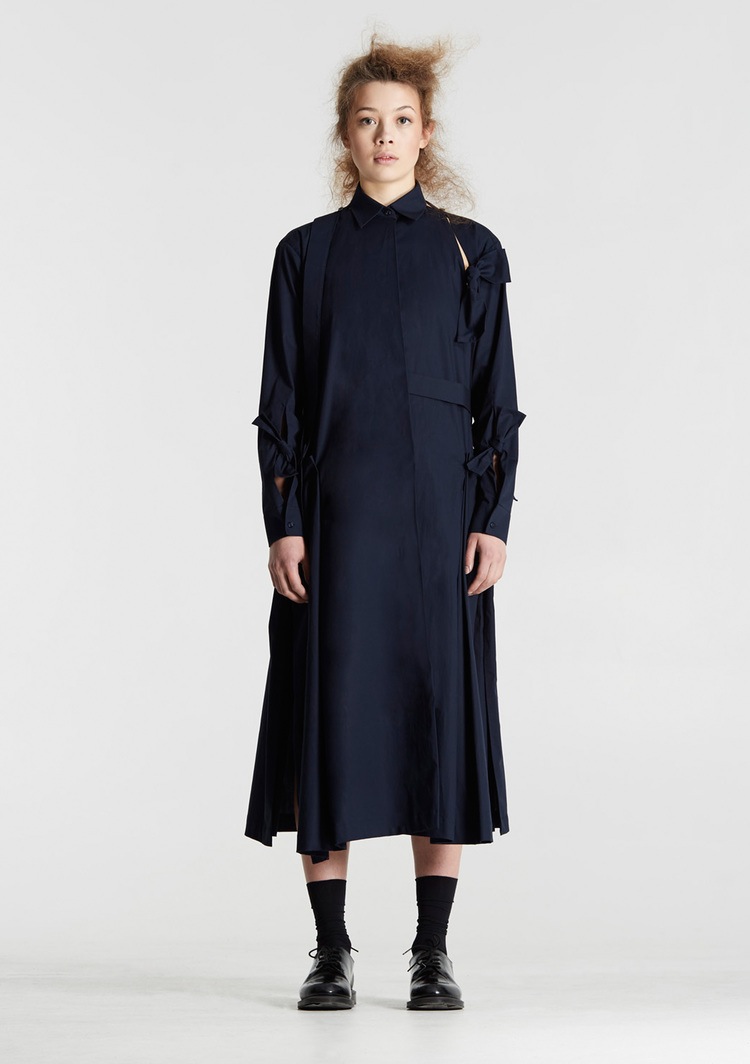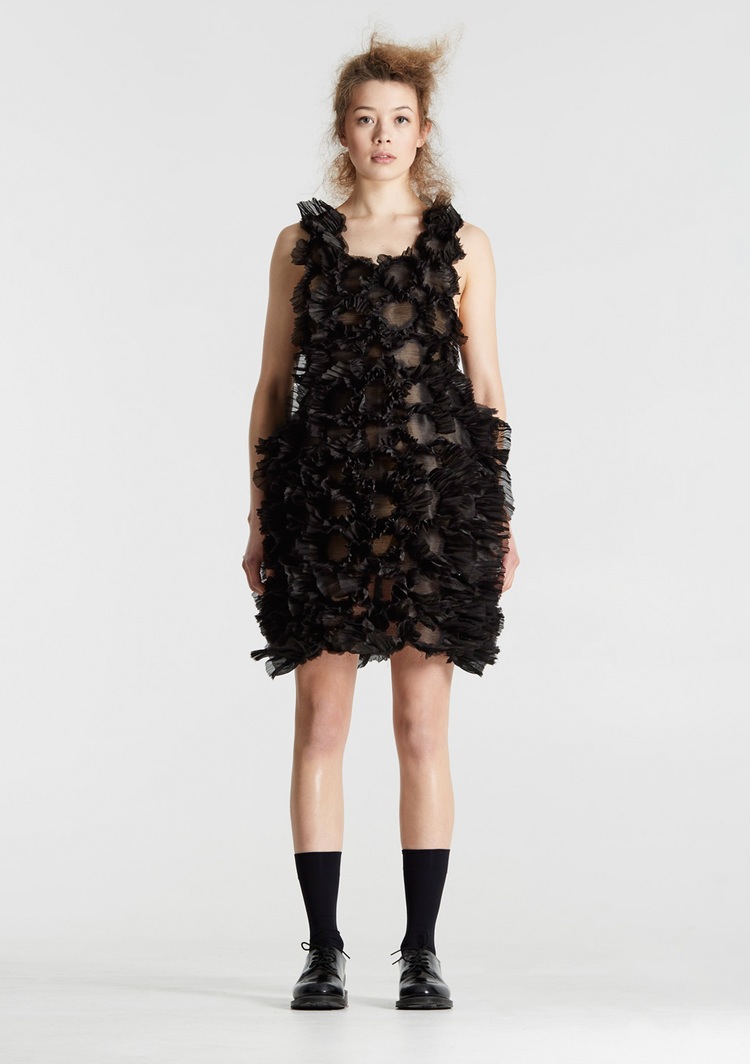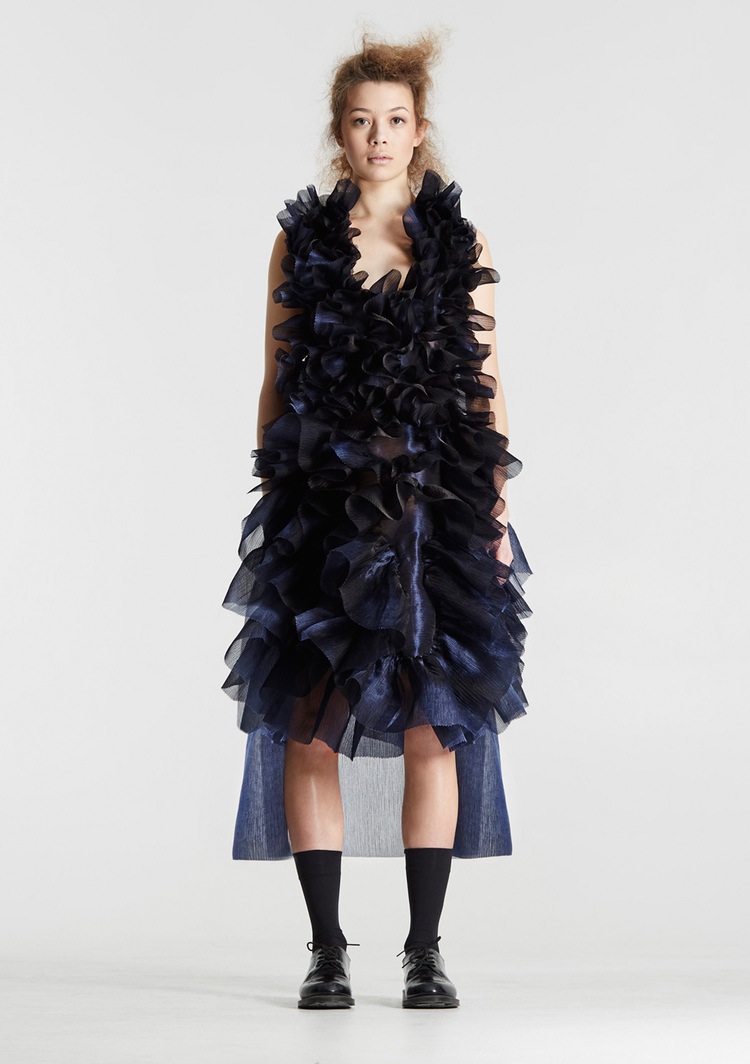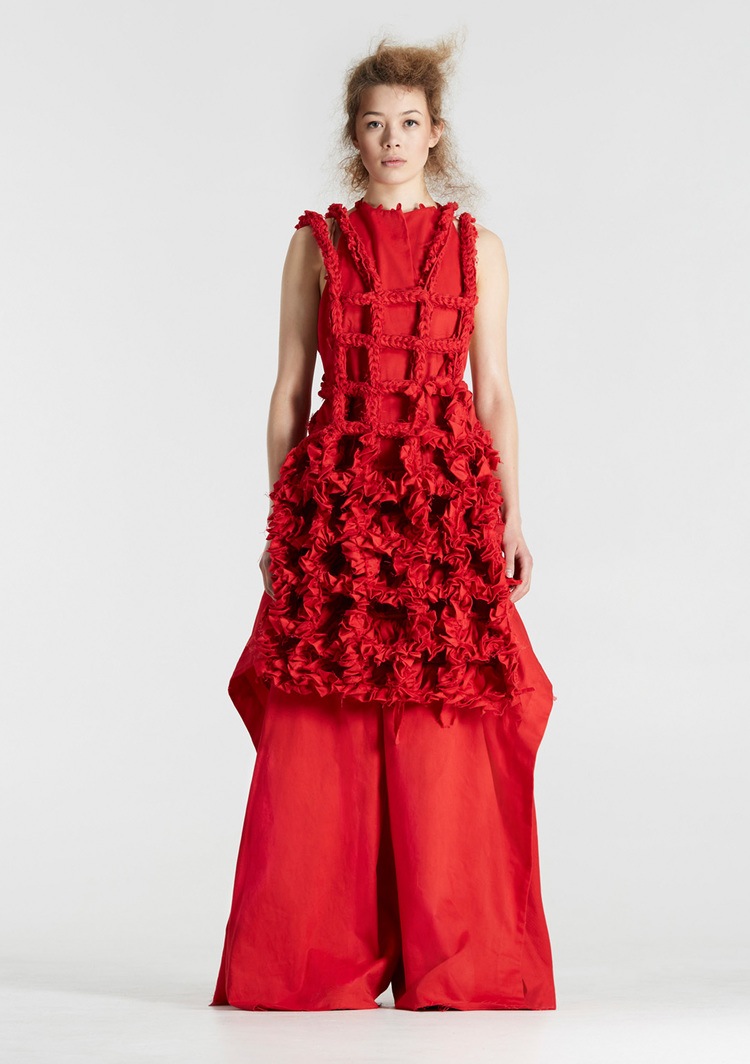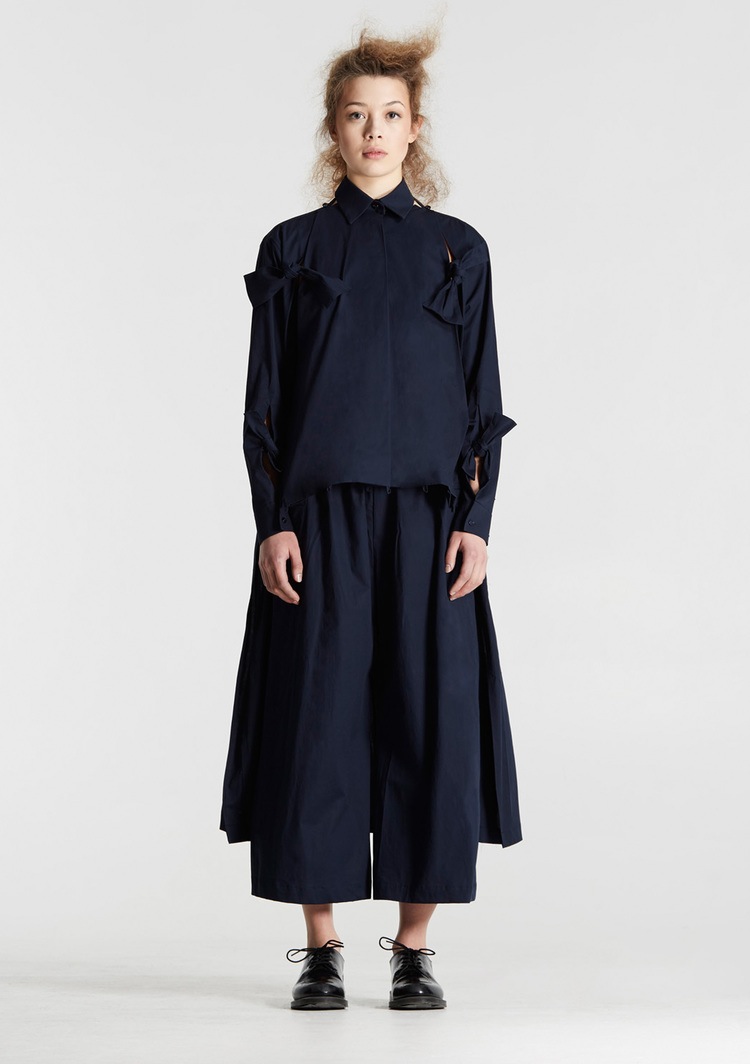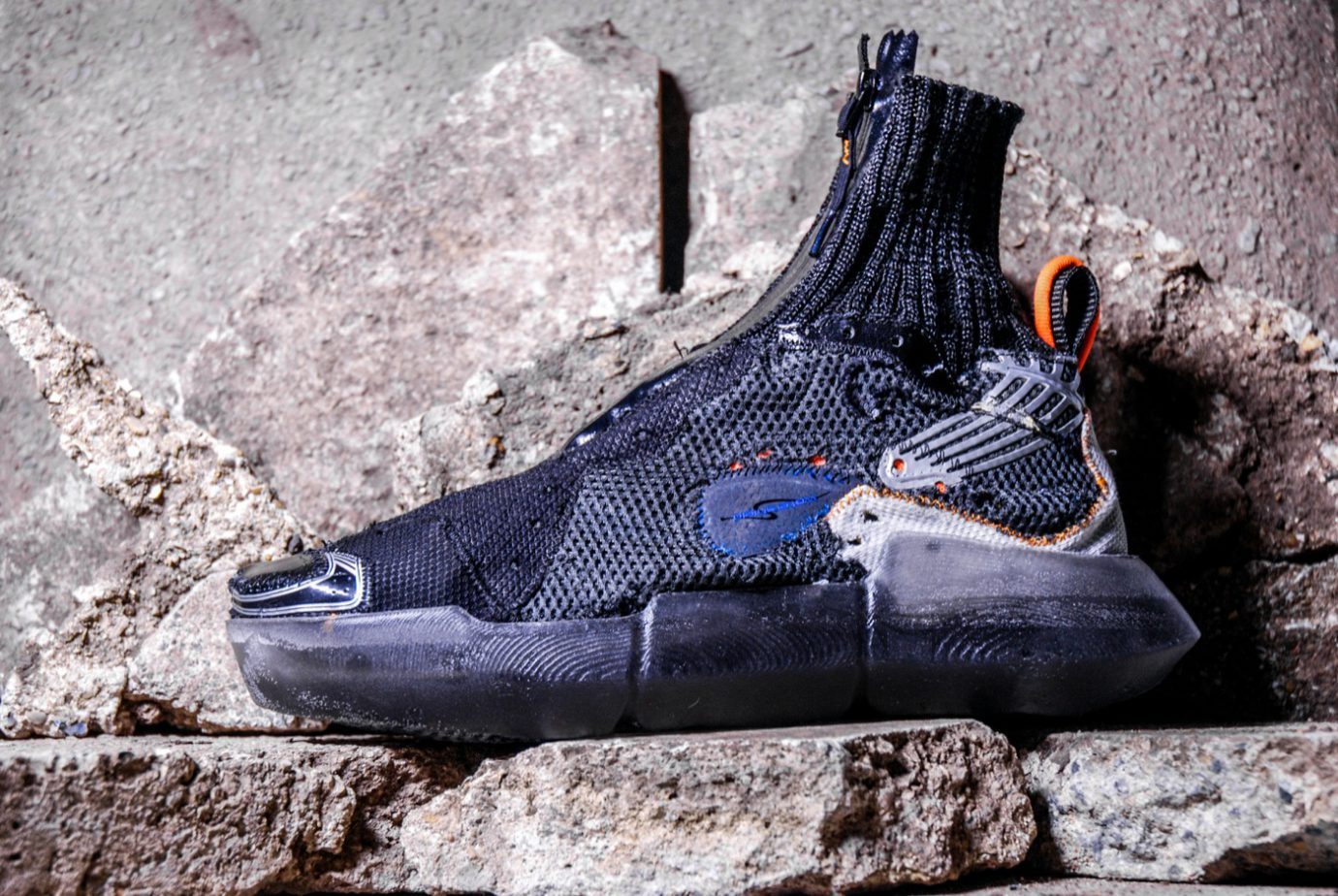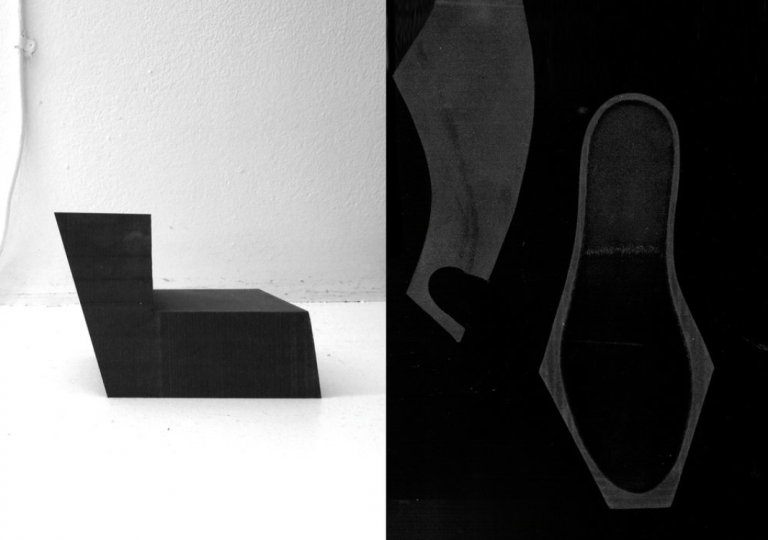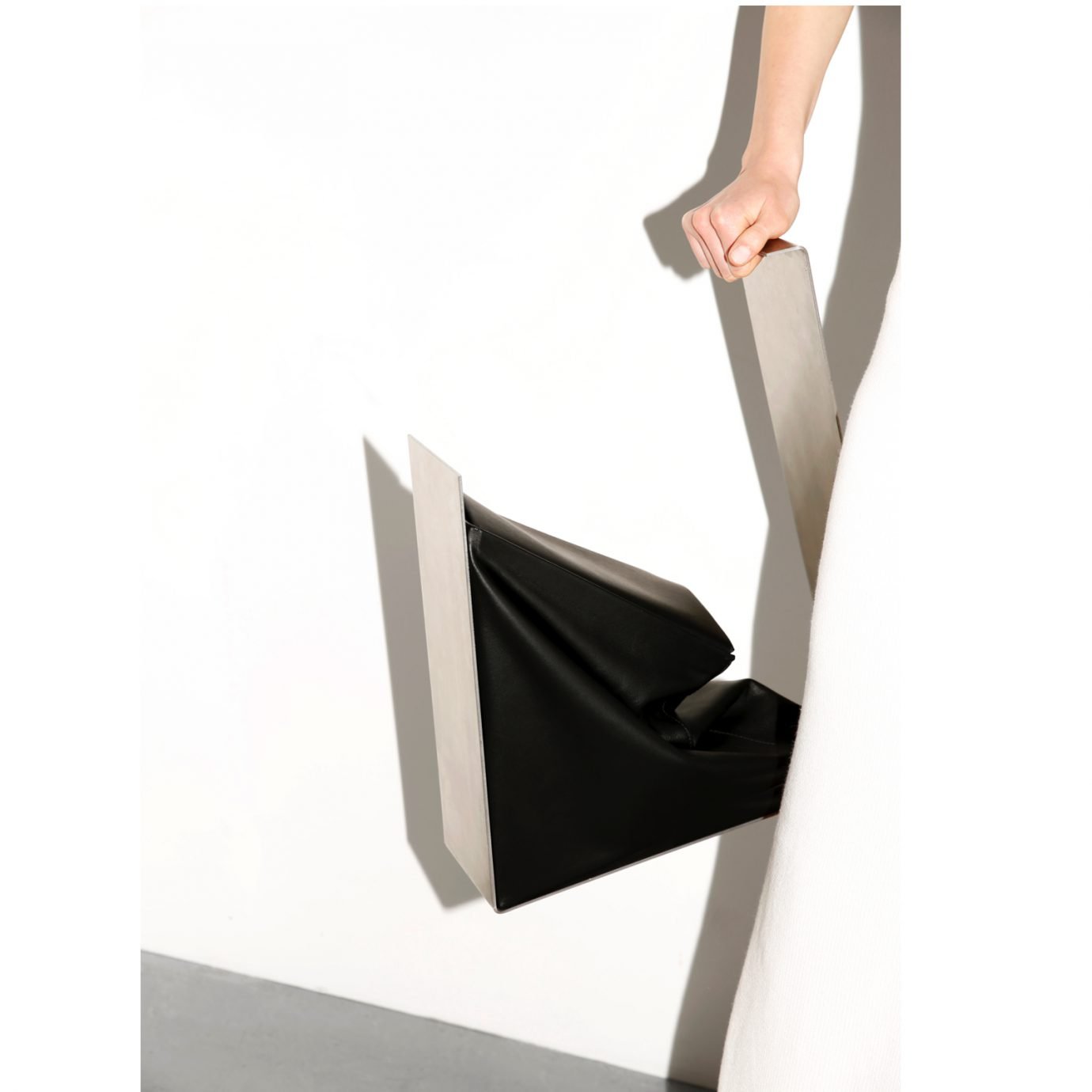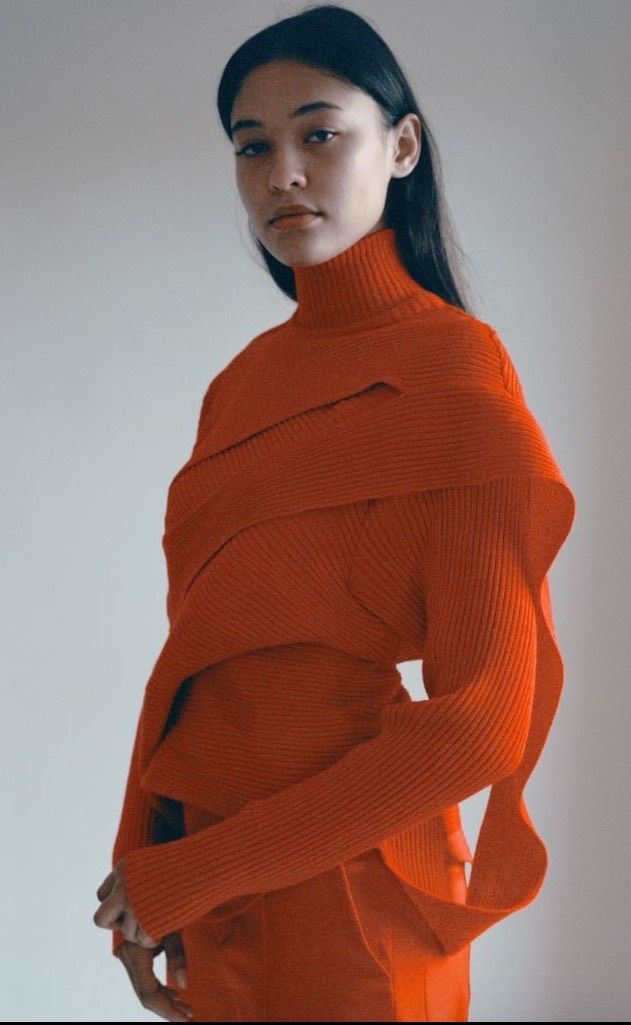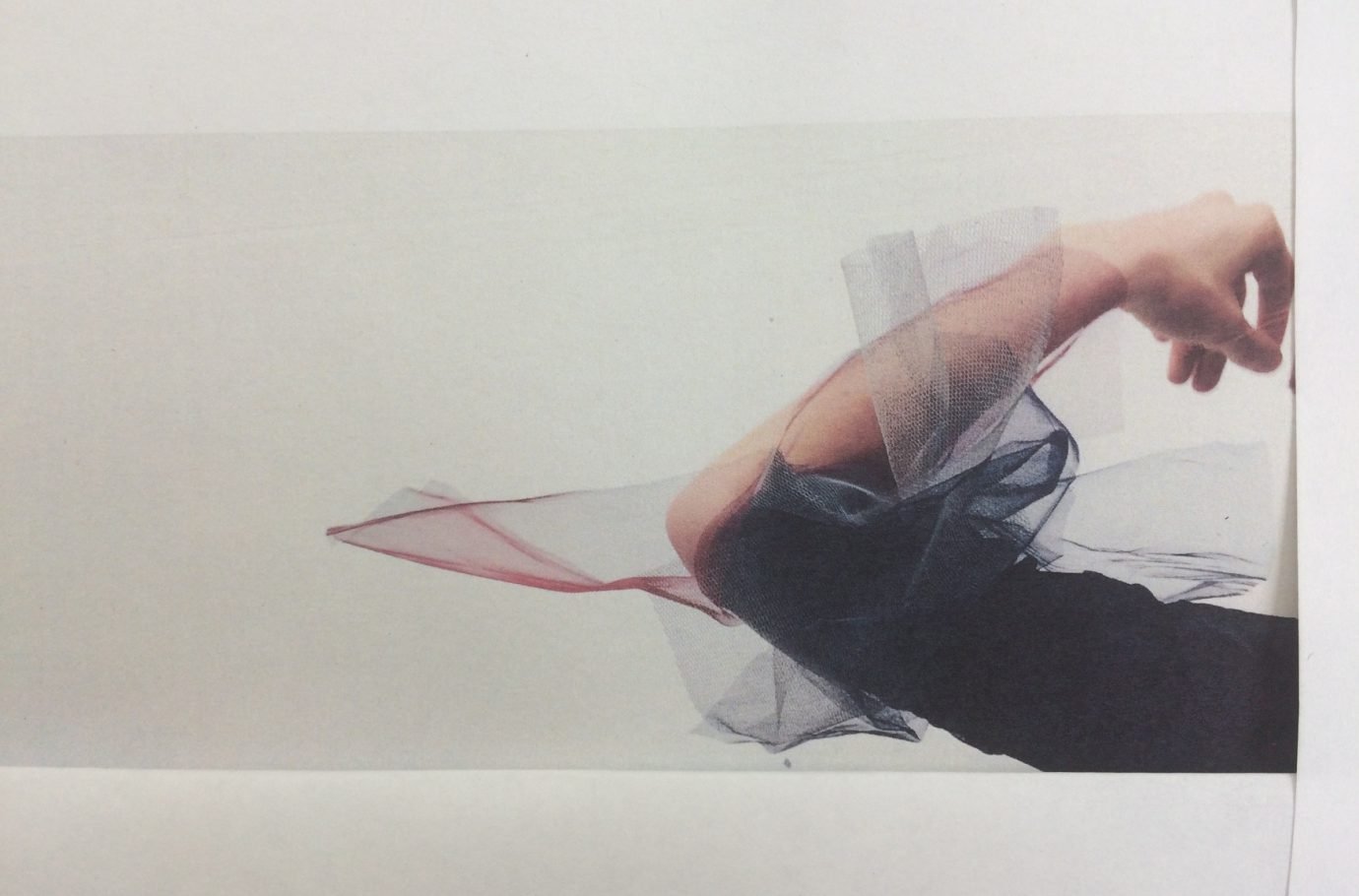Previous to taking up fashion as her principal activity, Roberts-Wood was a medical student in Glasgow. When we ask her if this background has any influence on her work today, she responds that while she doesn’t think it has any direct reference in this collection, there is “an underlying interest in the body, anatomy and organic structures. Patterns in nature and scientific phenomena are of constant fascination to me, and I’m sure this stems from my background in studying scientific subjects.”
Rooted in technical research, which started while she was still studying MA Fashion Design at the Royal College of Art, construction is at the forefront of Roberts-Wood’s design process. As a starting point, it plays a more prominent role than any theme or overarching concept, something she says “tends to develop later in the process.” She explains that her technical process represents “an evolution of an ongoing design development, where non-stitched and unconventional construction methods and textile techniques are developed.”

